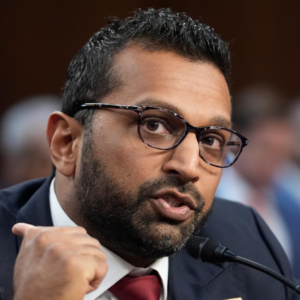In a jaw-dropping revelation that has sparked widespread debate online, Elon Musk has exposed what he believes is an astronomical fraud within the Social Security system. In a series of posts on his social media platform X (formerly Twitter), Musk presented data suggesting that millions of active Social Security numbers are associated with individuals over 130 years old—a scenario that defies logic and reality.
Musk’s initial post featured an image of Social Security data that displayed age buckets with the “death” field marked as FALSE, indicating that these individuals were still considered alive. “According to the Social Security database, these are the numbers of people in each age bucket with the death field set to FALSE! Maybe Twilight is real and there are a lot of vampires collecting Social Security,” Musk quipped, blending his characteristic humor with a serious accusation. His post quickly went viral, garnering over 310,000 likes and prompting thousands of responses from both supporters and critics.
In a follow-up post, Musk intensified his message by noting, “Yes, there are FAR more ‘eligible’ Social Security numbers than there are citizens in the USA. This might be the biggest fraud in history.” He argued that the sheer volume of Social Security numbers supposedly tied to individuals well beyond a realistic human lifespan points to a systemic failure in internal auditing and data management. Musk recalled that watchdogs like the Government Accountability Office had flagged these discrepancies years ago, yet no substantial measures had been taken to rectify them.
The implications of Musk’s claims are staggering. Census data indicates that there are fewer than 80,000 centenarians in the United States, yet Musk’s chart allegedly shows over 20 million people listed as being 100 or older. Even more shocking, his data suggests there are more than 3.9 million individuals in the 130-139 age bracket, over 3.5 million in the 140-149 range, and in excess of 1.3 million in the 150-159 range. Such figures are not only implausible but also hint at a massive loophole that could be exploited for fraudulent benefits.
Public reaction to Musk’s findings has been mixed. Many users expressed disbelief and called for immediate audits. One commenter wrote, “In decades, we haven’t created any internal auditing to catch this? There must be a basic report flagging deceased individuals!” Others pointed out that if these numbers are accurate, then it could represent one of the largest frauds in government history. “Over 20 million people listed as 100+ in the SS database? This is a red flag that demands a serious investigation,” another user responded.
Musk elaborated on the technical aspects of the issue, stating, “The logic flow diagram for the Social Security system looks INSANE. No one person actually knows how it works. The payment files that move between Social Security and Treasury have significant inconsistencies that are not reconciled. It’s wild.” His frustration is palpable, as he questions how a system designed to ensure that only eligible citizens receive benefits can fail so spectacularly in data management.
Not everyone agrees with Musk’s conclusions. Some progressive activists and data experts argue that there may be more to the data than meets the eye, suggesting that the appearance of implausible ages might result from technical glitches or misinterpretations of how the system records information. One critic, Will Stancil—known for his controversial social media presence—dismissed the claims, asserting that “only someone who has never really worked with data would see a table like this and not think ‘I must be missing something about how this works.’” When Musk responded with a laughing emoji, Stancil fired back with a string of insults, further highlighting the polarized reactions to the revelation.
Despite the criticism, the core of Musk’s argument remains focused on accountability and transparency within government systems. The data he presented not only challenges the integrity of the Social Security database but also raises questions about how millions of dollars in benefits are distributed. If millions of inactive or fraudulent accounts are receiving payments, it could mean that taxpayer dollars are being funneled to individuals who no longer exist or who never should have been eligible in the first place.
Musk’s call for a comprehensive audit of the Social Security system has resonated with many who have long suspected that systemic flaws allow for widespread fraud. “We need a serious, rigorous audit to determine the true scope of this problem,” one commenter wrote. “It’s time to get to the bottom of this and ensure that every dollar is accounted for.”
As the debate rages on, Musk’s explosive claims are likely to prompt further investigations by oversight bodies such as the Government Accountability Office. Whether his data will lead to concrete policy changes or simply fuel more controversy remains to be seen. What is clear, however, is that Musk has once again managed to shine a spotlight on potential government inefficiencies, forcing both citizens and lawmakers to confront the possibility that the Social Security system may be one of the most significant frauds in history.





